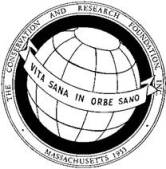 Living Oceans Society has worked for years to identify and protect important coral and sponge habitat off the coast of British Columbia from destructive fishing practices. In 2009 they conducted the Finding Coral Expedition to areas off the coast of British Columbia to locate deep-sea coral forests. The expedition was a successful, ambitious venture that took years of fund raising and months of planning by their science team and staff from Nuytco Research who built and maintained the submarines. Observations and underwater video recordings revealed that these beautiful corals and sponges provide crucial habitat for many species of fish and other organisms.
Living Oceans Society has worked for years to identify and protect important coral and sponge habitat off the coast of British Columbia from destructive fishing practices. In 2009 they conducted the Finding Coral Expedition to areas off the coast of British Columbia to locate deep-sea coral forests. The expedition was a successful, ambitious venture that took years of fund raising and months of planning by their science team and staff from Nuytco Research who built and maintained the submarines. Observations and underwater video recordings revealed that these beautiful corals and sponges provide crucial habitat for many species of fish and other organisms.
The Finding Coral Expedition also caught the attention of the B.C. bottom trawl fleet. Following the team’s return, Living Oceans and other environmental partners began discussions with the B.C. bottom trawlers to explore ways to reduce the fishery’s impacts on corals, sponges and other deep-sea habitat. As a result, after years of negotiations, on March 28th Living Oceans Society announced with representatives of the Canadian Groundfish Research and Conservation Society, a suite of substantial measures to reduce the bottom trawl fishery’s impacts on fragile deep sea ocean ecosystems.
The changes, which have been implemented by Fisheries and Oceans Canada for the 2012 fishing season, include:
- Defined boundaries that freeze the fishery’s footprint to areas already trawled;
- Individual limits on each vessel’s amount of coral and sponge bycatch (the entire fleet is limited to 4,500 kg total coral and sponge);
- A system to alert the entire fleet to the location of any single trawl tow that catches more than 20 kg of coral or sponge; and
- A joint habitat committee composed of representatives from industry, environmental groups and DFO to evaluate the measures at the end of each fishing season.
These groundbreaking measures represent significant steps forward along the road to sustainability for this fishery. The Conservation and Research Foundation is proud to have contributed to the work of Living Oceans. For more information on their ongoing work, visit their web site at http://www.livingoceans.org/.


Leave a comment
Comments feed for this article